-
Sold out

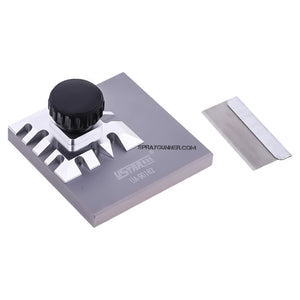 Vendor:U-Star
Vendor:U-StarEtched Chip Processing Vise
Regular price $23.17 USDRegular price -
 Vendor:VOLKS USA INC.
Vendor:VOLKS USA INC.ZM Scalpel PD-20
Regular price $15.00 USDRegular price -
 Vendor:AMMO by Mig Jimenez
Vendor:AMMO by Mig JimenezAMMO by MIG Protective Blade Curved - 1 pc.
Regular price $4.39 USDRegular price -

 Vendor:U-Star
Vendor:U-StarAluminum Texture Multi-Blade Tool
Regular price $28.00 USDRegular price -
Sold out


-
Sold out
 Vendor:U-Star
Vendor:U-StarAdhesive Abrasive Sand Paper Kit
Regular price $5.00 USDRegular price -

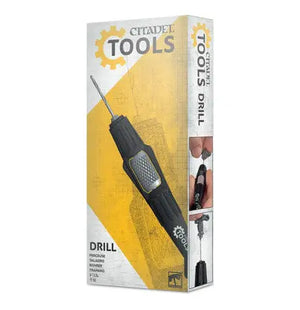 Vendor:Games Workshop
Vendor:Games WorkshopCITADEL TOOLS: DRILL
Regular price $29.75 USDRegular price -

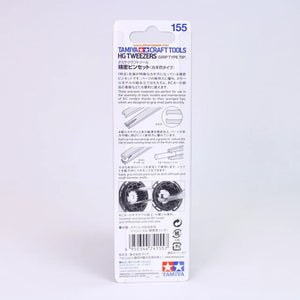 Vendor:Tamiya
Vendor:TamiyaTamiya HG Tweezers Grip Type Tip
Regular price $25.00 USDRegular price -

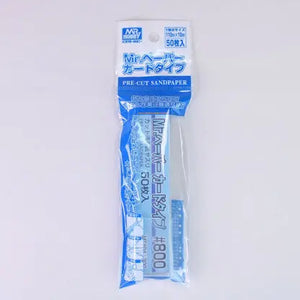 Vendor:GSI Creos Mr. Hobby
Vendor:GSI Creos Mr. HobbyGSI Creos Mr. Hobby Type Pre-cut Sand Paper #800 MT404:300
Regular price $4.00 USDRegular price -

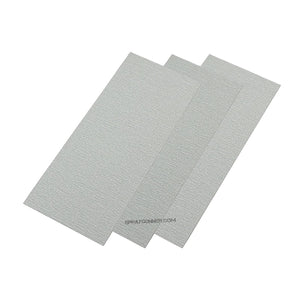 Vendor:Tamiya
Vendor:TamiyaTamiya Finishing Abrasives P240 (3PCS)
Regular price $2.50 USDRegular price -
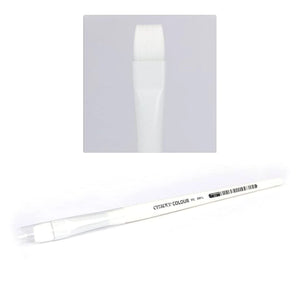 Vendor:Games Workshop
Vendor:Games WorkshopCITADEL SYNTHETIC DRY BRUSH (LARGE)
Regular price $8.93 USDRegular price -
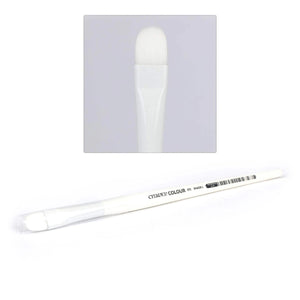 Vendor:Games Workshop
Vendor:Games WorkshopCITADEL SYNTHETIC SHADE BRUSH (Large)
Regular price $10.63 USDRegular price -
Sold out
 Vendor:AMMO by Mig Jimenez
Vendor:AMMO by Mig JimenezAMMO by MIG Brush Sets - Diorama & Scenic Brush Set
Regular price $8.75 USDRegular price -
 Vendor:AMMO by Mig Jimenez
Vendor:AMMO by Mig JimenezAMMO by MIG Brush Sets - Figures Brush Set
Regular price $31.57 USDRegular price -
 Vendor:Monument Hobbies
Vendor:Monument HobbiesMONUMENT HOBBIES: Dauntless Synthetic Brush 3
Regular price $5.00 USDRegular price -

 Vendor:Vallejo
Vendor:VallejoVallejo Tools Curved Tip Stainless Steel Tweezers (175 mm)
Regular price $7.55 USDRegular price -

 Vendor:Vallejo
Vendor:VallejoVallejo Tools Set of 5 Blades – #68 Stencil blades
Regular price $2.29 USDRegular price -

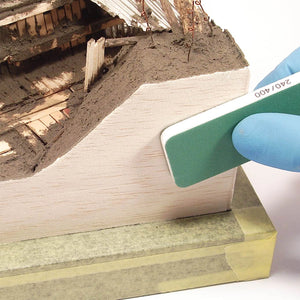 Vendor:Vallejo
Vendor:VallejoVallejo Tools Set of 3 Flexi Sanders Dual-Grit (80x30x6 mm)
Regular price $4.79 USDRegular price -
 Vendor:AMMO by Mig Jimenez
Vendor:AMMO by Mig JimenezAMMO by MIG Collection Brushes - Conical Ø2 Brush
Regular price $15.95 USDRegular price -
 Vendor:AMMO by Mig Jimenez
Vendor:AMMO by Mig JimenezAMMO by MIG Collection Brushes - Conical Ø3 Brush
Regular price $17.55 USDRegular price -

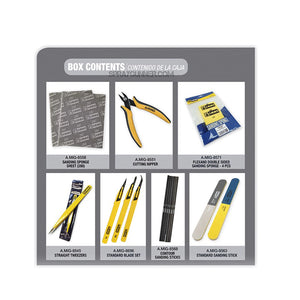 Vendor:AMMO by Mig Jimenez
Vendor:AMMO by Mig JimenezAmmo By Mig SOLUTION BOX Beginners Set - Tools
Regular price $38.50 USDRegular price -
 Vendor:VOLKS USA INC.
Vendor:VOLKS USA INC.ZM V Tweezers - Bent
Regular price $31.00 USDRegular price -
Sold out

 Vendor:U-Star
Vendor:U-StarMini Plastic Funnel (10 ct)
Regular price $10.00 USDRegular price -
Sold out

 Vendor:U-Star
Vendor:U-StarPortable Hand Tool Kit #73
Regular price $36.00 USDRegular price -
Sold out

 Vendor:GSI Creos Mr. Hobby
Vendor:GSI Creos Mr. HobbyGSI Creos Mr. Hobby GT34 Almighty Clip II
Regular price $20.00 USDRegular price -
Sold out

 Vendor:GSI Creos Mr. Hobby
Vendor:GSI Creos Mr. HobbyGSI Creos Mr. Hobby Mr. Sharpness Nipper Double Blade (MT105)
Regular price $26.95 USDRegular price -
 Vendor:Games Workshop
Vendor:Games WorkshopCITADEL SMALL ARTIFICER LAYER BRUSH
Regular price $28.05 USDRegular price -
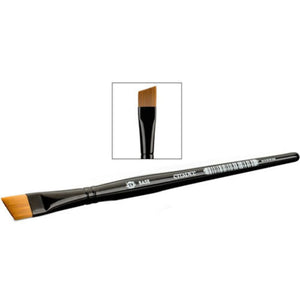 Vendor:Games Workshop
Vendor:Games WorkshopCITADEL SYNTHETIC BASE BRUSH (X-LARGE)
Regular price $8.93 USDRegular price -
Sold out
 Vendor:GSI Creos Mr. Hobby
Vendor:GSI Creos Mr. HobbyGSI Creos Mr. Brush MB06 - Flat No. 4
Regular price $7.00 USDRegular price -

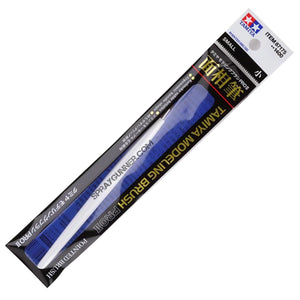 Vendor:Tamiya
Vendor:TamiyaTamiya Modeling PRO II Pointed Brush Small
Regular price $23.50 USDRegular price -
Save $1.71 USD
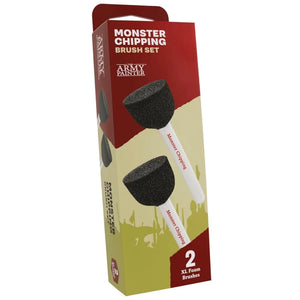 Vendor:THE ARMY PAINTER
Vendor:THE ARMY PAINTERTHE ARMY PAINTER: Monster Chipping Brush Set (2025)
Regular price $6.75 USDRegular price$8.46 USD-$1.71 USD Sale price $6.75 USD -
 Vendor:THE ARMY PAINTER
Vendor:THE ARMY PAINTERTHE ARMY PAINTER: Hobby Starter Brush Set (2025)
Regular price $14.48 USDRegular price -
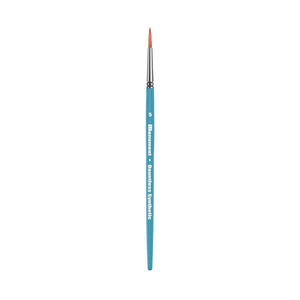 Vendor:Monument Hobbies
Vendor:Monument HobbiesMONUMENT HOBBIES: Dauntless Synthetic Brush 5
Regular price $5.00 USDRegular price -
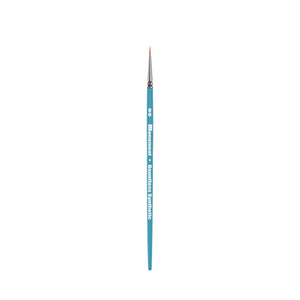 Vendor:Monument Hobbies
Vendor:Monument HobbiesMONUMENT HOBBIES: Dauntless Synthetic Brush 00
Regular price $5.00 USDRegular price -

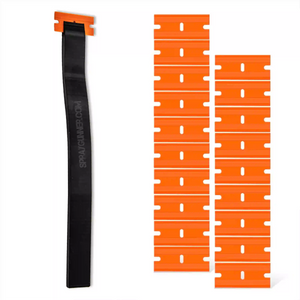 Vendor:NO-NAME brand
Vendor:NO-NAME brandNO-NAME Brand Smart Scraper for 3D Printers (10 blades)
Regular price $10.00 USDRegular price -

 Vendor:Vallejo
Vendor:VallejoVallejo Tools Steel Rule (150 mm)
Regular price $5.27 USDRegular price
Modeling Tools and Brushes
What you’ll find here
From trimming sprues to final weathering, the right tool saves time and improves results. This collection gathers Modeling Tools and Brushes from trusted brands like AMMO by Mig Jimenez, The Army Painter, Tamiya, Vallejo, Citadel, and Monument Hobbies so you can compare quickly and build a bench kit that fits your projects and budget. Expect precision knives and saws, pin vises and micro-bits, scribers, sanding sticks and sponges, tweezers and clamps, rulers and gauges—plus synthetic and natural-hair brushes for basecoats, details, liners and drybrushing.
Modeling Tools and Brushes are organized by real modeling tasks, helping figure painters, scale modelers and diorama builders grab exactly what they need without guessing.
Cutting, shaping & cleanup
Clean separations make clean assemblies. Use a sharp craft knife or micro saw to remove parts, then a seam scraper to lift mold lines without gouging. Replace blades often—fresh edges cut safer and cleaner. Reinstate lost lines with a panel scriber; several light passes beat one heavy stroke and keep edges crisp.
Quick picks after a short intro:
• Craft knife with spare blades for daily trimming.
• Razor saw for thick gates and resin.
• Scriber for panel lines and access hatches.
Sanding & surface prep
Feather joints and refine putty with flexible sanding sponges and sticks. Work through grits: 320–400 to level, 600–1000 to blend, 1500–3000 for a paint-ready sheen. Files help square edges; polishing pads bring clear parts back before dipping.
Bench tip: wrap a sliver of abrasive around a cocktail stick to reach between rivets or inside grills.
Drilling, pinning & alignment
For strong joints, pin it. A pin vise with 0.3–1.0 mm bits lets you add alignment pegs to ankles, barrels, and railings. Mark depth with tape on the bit for repeat accuracy. Magnetic helping hands and micro clamps hold parts steady while glue cures.
Adhesives & applicators
Keep three solutions ready: thin cement for styrene seams, medium CA for resin/metal, and PVA for groundwork or clear parts. Micro applicators, silicone spatulas and needle tips place adhesive exactly where it belongs—less cleanup, stronger bonds. A small bottle of debonder is cheap insurance.
Brushes for paint, washes & effects
Choose by task and medium. Synthetics excel with acrylics and rough work; natural hair (e.g., Kolinsky) brings fine points and smooth flow for details.
After the paragraph, a compact, useful list:
• Round detail: dials, straps, edges.
• Flat/filbert: fast basecoats and blending.
• Liner/rigger: cables and long stripes.
• Drybrush: domed or stiff tips for texture.
Care matters—use a gentle cleaner and reshape tips while damp to extend life.
Finishing helpers
When the build is solid, finishing tools polish the result: polishing sticks for canopies, spatulas for acrylic muds and textures, swabs and pointed cotton buds for streaking and cleanup. A small steel ruler and engineer’s square keep scratch-built parts straight and true.
How to choose fast
Start with a minimal kit, then expand:
• Knife + spare blades, seam scraper, two grits of sanding sticks.
• Pin vise with micro-bits, straight and curved tweezers, micro clamps.
• Thin cement, medium CA, a few micro applicators.
• Three brushes: one round detail, one flat/filbert, one drybrush.
As projects grow, add a scriber, polishing pads, specialty liners, and a precision saw. Every item here plays nicely with standard hobby paints and materials, making Modeling Tools and Brushes a straightforward upgrade to your results.






















































